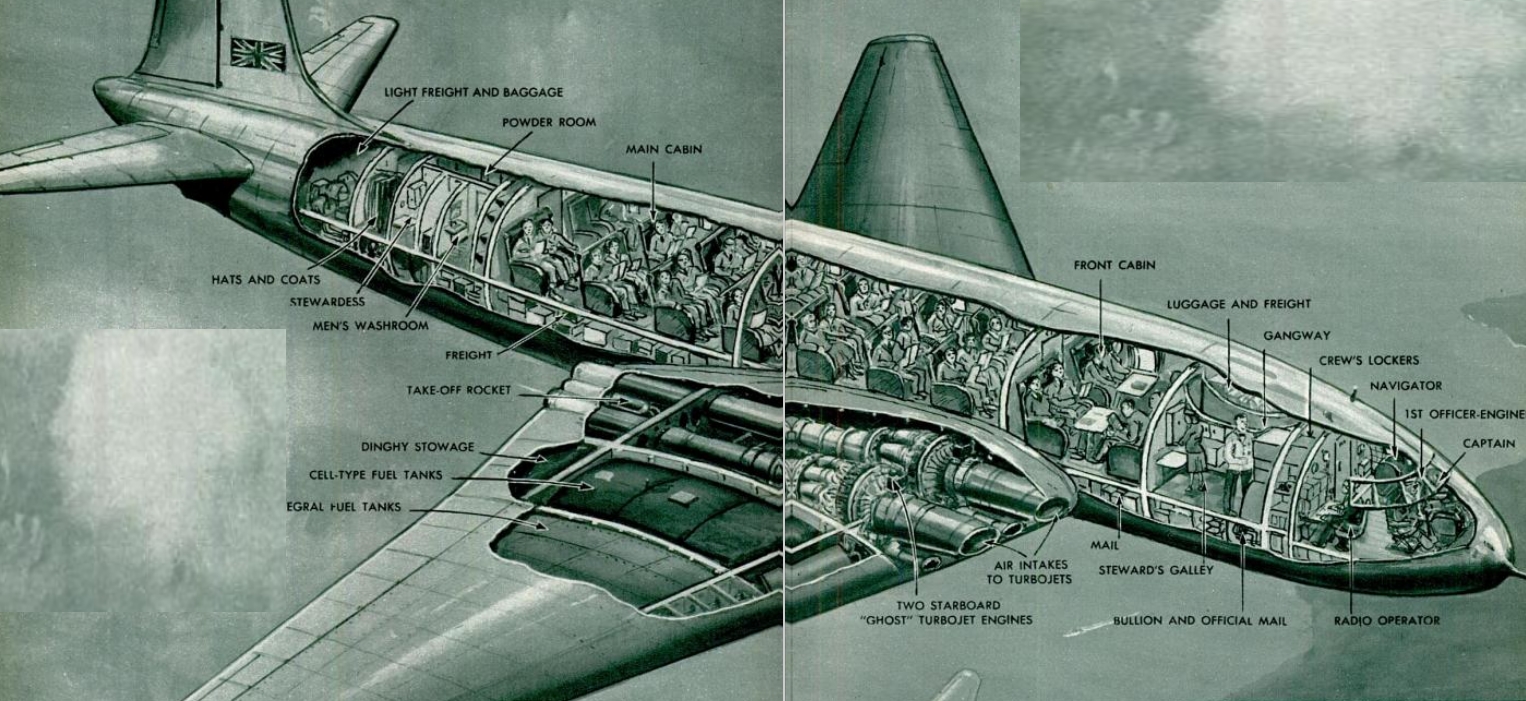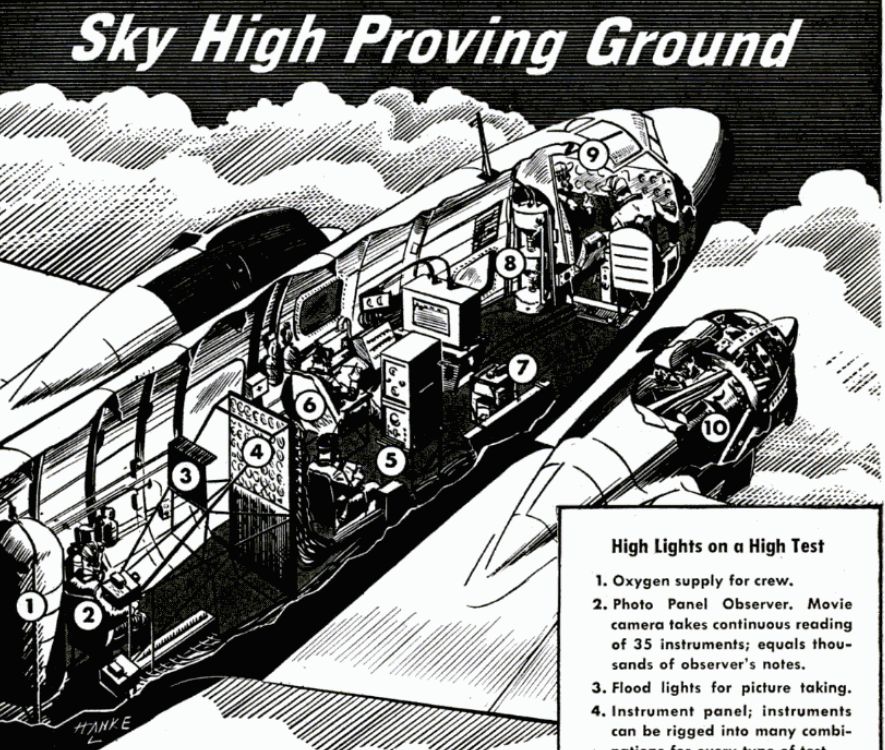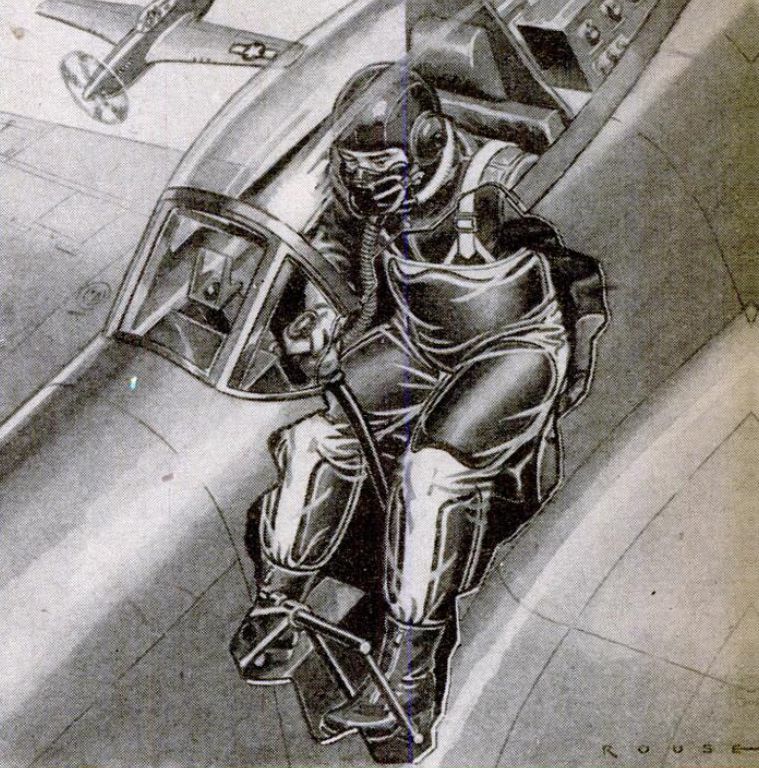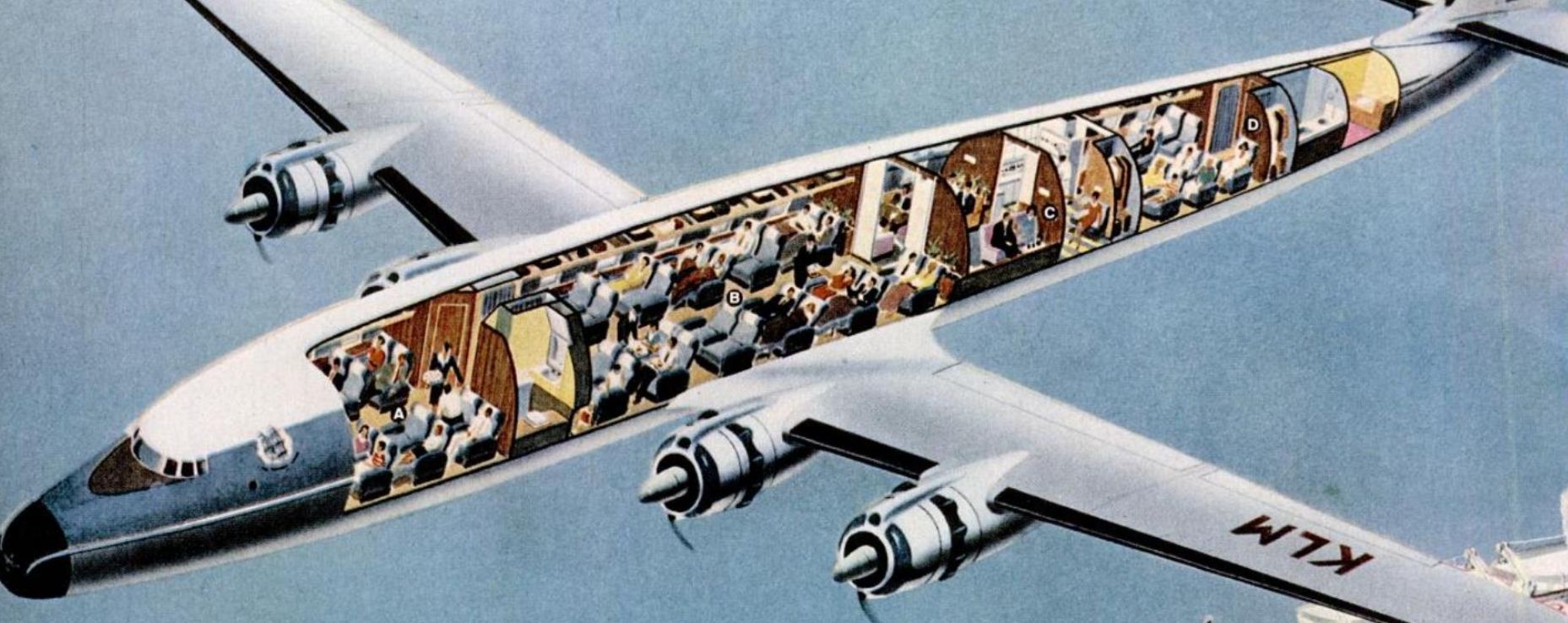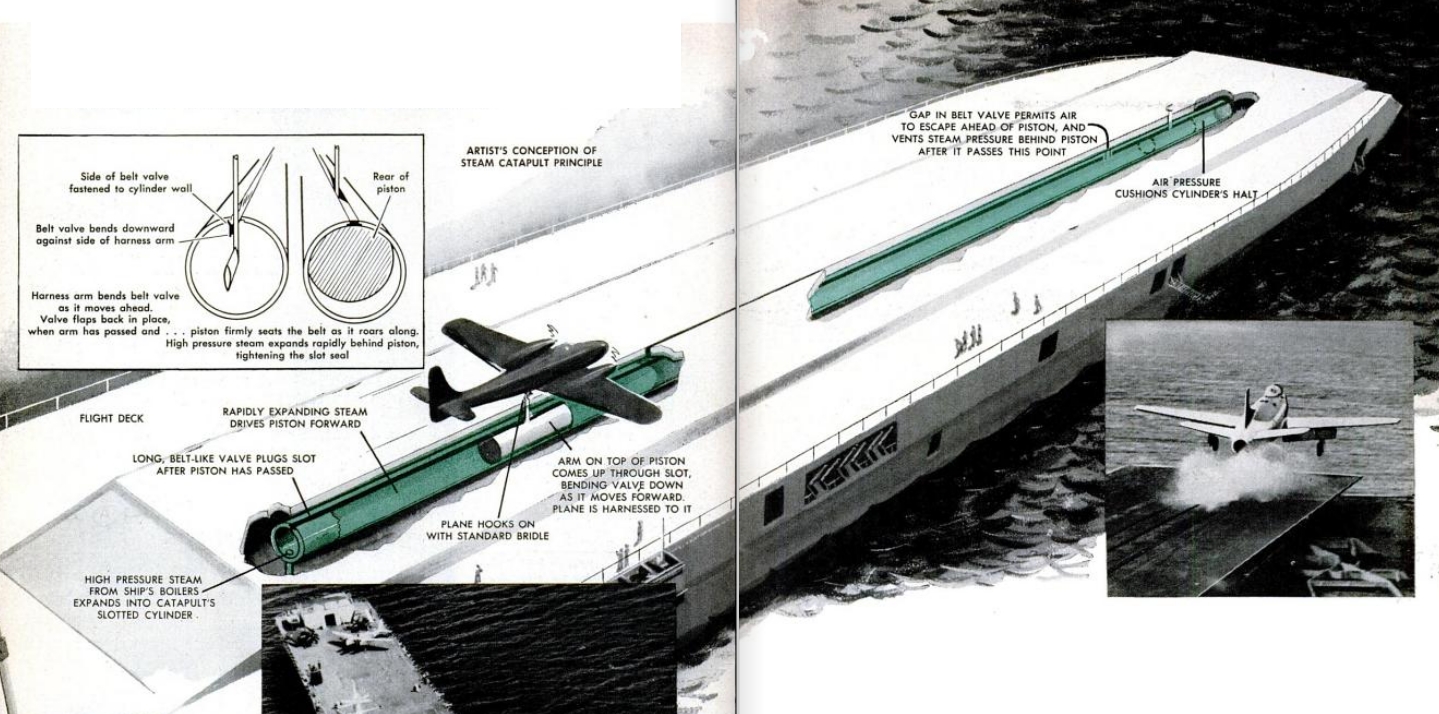
Pictured is a 1953 cutaway of the planned HMS Perseus, showing the novel introduction of a steam catapult to replace the customary cylinder, ram, pulley, and wire catapults.
The plane is hooked to a long, slotted cylinder. High pressure steam is released from the ship’s boilers into the cylinder.
As of the date of that article, only test planes and concrete weights had been launched. But these test “flights” were highly successful. One unpiloted test plane was flung to 1,500 feet and circled the ship for four minutes while everyone ran for cover. Finally, its tanks ran dry and the plane fell into the sea.
Source: Popular Mechanics March 1953

